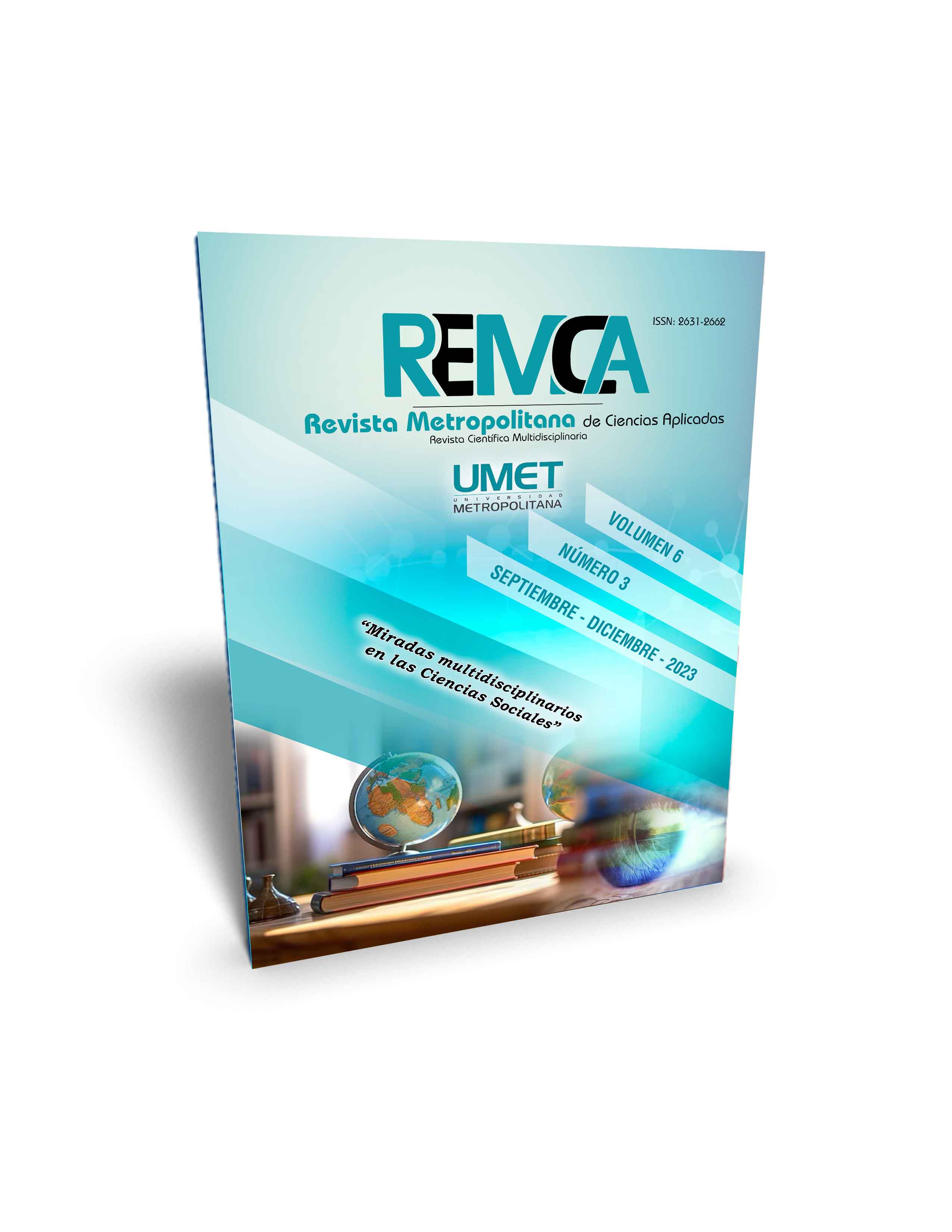El principio de voluntariedad de la mediación en los actos notariales
DOI:
https://doi.org/10.62452/rw14yx57Palabras clave:
Principio de voluntariedad, notario, mediaciónResumen
El presente trabajo se propuso indagar en el principio de voluntariedad que rige al sistema de mediación, en tanto institución con efectividad para solucionar conflictos extrajudiciales. El enfoque metodológico fue sistémico, de tipo teórico – deductivo, de carácter socio – jurídico y con apoyo del derecho comparado. A través del método comparativo, principalmente el estudio de las normativas que contemplan la competencia de los notarios como mediadores en España, México y Alemania, se analizó la posibilidad que pueda ser factible su implementación dentro del sistema notarial ecuatoriano. Se definió conceptualmente el principio de voluntariedad, la mediación notarial y los actos notariales, para posteriormente proceder a realizar la respectiva discusión. Se concluyó que en la mediación son los mismos interesados quienes acogen de manera voluntaria la responsabilidad de solventar sus conflictos y conseguir acuerdos satisfactorios para la totalidad de las partes. Esto mediante un procedimiento sencillo y flexible, asistido por la presencia imparcial y confidencial del notario formado para tales efectos. En Ecuador, al igual que en países como España y México, los notarios en tanto funcionarios públicos del Estado y especialistas en Derecho, están en capacidad de asesorar resolver determinados conflictos que surjan entre las partes sin tener que acudir a juicio.
Descargas
Referencias
Aguilar, L. (2020). La función notarial: antecedentes, naturaleza y nuevas tendencias. (Tesis de Doctorado). Universidad de Salamanca.
Bernal, T. (2008). La mediación, una solución a los conflictos de pareja. Colex.
Cabrera, R. (2017). La Mediación como Método para la Resolución de Conflictos. Midac, SL.
Cobo, A., & Mesías, M. (agosto de 2018). Med-arb, arb-Medyarb-Med-arb a la luz de la legislación ecuatoriana. USFQ Law Revie, 5(1), 36-60.
Consejo de la Judicatura del Estado de México. (2022). Reglamento del Centro de Mediación y Conciliación Notarial del Estado de México. https://legislacion.edomex.gob.mx/sites/legislacion.edomex.gob.mx/files/files/pdf/gct/2022/octubre/oct061/oct061g.pdf
Consejo General de Notariado en España. (2020). Mediación: resolución de conflictos. https://www.notariado.org/portal/mediaci%C3%B3n-ante-notario
Ecuador. Asamblea Nacional Cosntituyente. (2009). Constitución de la República del Ecuador. Registro Oficial No. 449. https://www.registroficial.gob.ec/index.php/registro-oficial-web/publicaciones/registro-oficial/item/download/3671_b4a5b490daeca82939d7d0479cec8c37
Ecuador. Asamblea Nacional. (2021). Reglamento a la Ley de Arbitraje y Mediación. Decreto Ejecutivo No. 165. http://www.pge.gob.ec/images/2022/NormativaMediacion/MERCANTI_REGLAMENTO_A_LA_LEY_DE_ARBITRAJE_Y_MEDIACION.pdf
Ecuador. Congreso Nacional. (2006). Ley del Arbitraje y Mediación. Registro Oficial 417. https://www.funcionjudicial.gob.ec/pdf/Ley%20de%20Arbitraje%20y%20Mediación.pdf
Ecuador. Consejo de la Judicatura. (2021). Beneficios de la mediación. http://www.funcionjudicial.gob.ec/mediacion/index.php/2015-04-13-21-21-25/beneficios-de-la-mediacion
Gobierno del Estado de México. (2002). Ley del Notariado del Estado de México. https://legislacion.edomex.gob.mx/sites/legislacion.edomex.gob.mx/files/files/pdf/ley/vig/leyvig019.pdf
Jequier, E. (2016). La mediación como alternativa de solución de los conflictos empresariales en Chile: Razones y mecanismos para su regulación. , 29(1),. Revista de derecho (Valdivia), 29(1), 91-118.
Mensías, F. (2005). La voluntad. https://derechoecuador.com/la-voluntad/
Milán Morales, N., Ordelin Font, J. L., & Vega Cardona, R. J. (2015). La intervención notarial en la mediación. Consideraciones de ‘lege ferenda’ en la prevención/resolución de conflictos en el ordenamiento jurídico cubano. Revista de derecho Privado, (28), 403–433.
Ortiz, A. P. (2020). El derecho de autonomía de voluntad y el principio de formalidad en los actos que generan consecuencias jurídicas a partir de la sucesión intestada. (Trabajo de titulación). Universidad Técnica de Ambato.
Palma, I. (2021). Alternativa en la mediación notarial para la solución de conflictos. (Tesis de Maestría). Universidad Católica de Santiago de Guayaquil.
Pérez, G., & Cobas, M. (2013). Mediación y jurisdicción voluntaria en el marco de la modernización de la justicia: Una aproximación a la legislación española. Boletín Mexicano de Derecho Comparado, 46(137), 647-677.
Piedra, M., & Polo, E. (2022). El principio de voluntariedad y la tenencia en mediación. Polo del Conocimiento, 7(9), 770-793.
Tarud, C. (2013). El principio de voluntariedad en la mediación familiar, en Chile. Opinión Jurídica. http://www.scielo.org.co/pdf/ojum/v12n23/v12n23a08.pdf
Descargas
Publicado
Número
Sección
Licencia
Derechos de autor 2023 María Trinidad Mongón-Cepeda, Alfredo Fabian Carrillo (Autor/a)

Esta obra está bajo una licencia internacional Creative Commons Atribución-NoComercial-CompartirIgual 4.0.
Los autores que publican en la Revista Metropolitana de Ciencias Aplicadas (REMCA), están de acuerdo con los siguientes términos:
1. Derechos de Autor
Los autores conservan los derechos de autor sobre sus trabajos sin restricciones. Los autores otorgan a la revista el derecho de primera publicación. Para ello, ceden a la revista, de forma no exclusiva, los derechos de explotación (reproducción, distribución, comunicación pública y transformación). Los autores pueden establecer otros acuerdos adicionales para la distribución no exclusiva de la versión de la obra publicada en la revista, siempre que exista un reconocimiento de su publicación inicial en esta revista.
© Los autores.
2. Licencia
Los trabajos se publican en la revista bajo la licencia de Atribución-NoComercial-CompartirIgual 4.0 Internacional de Creative Commons (CC BY-NC-SA 4.0). Los términos se pueden consultar en: https://creativecommons.org/licenses/by-nc-sa/4.0/deed.es
Esta licencia permite:
- Compartir: copiar y redistribuir el material en cualquier medio o formato.
- Adaptar: remezclar, transformar y crear a partir del material.
Bajo los siguientes términos:
- Atribución: ha de reconocer la autoría de manera apropiada, proporcionar un enlace a la licencia e indicar si se ha hecho algún cambio. Puede hacerlo de cualquier manera razonable, pero no de forma tal que sugiera que el licenciador le da soporte o patrocina el uso que se hace.
- NoComercial: no puede utilizar el material para finalidades comerciales.
- CompartirIgual: si remezcla, transforma o crea a partir del material, debe difundir su creación con la misma licencia que la obra original.
No hay restricciones adicionales. No puede aplicar términos legales ni medidas tecnológicas que restrinjan legalmente a otros hacer cualquier cosa que la licencia permita.




